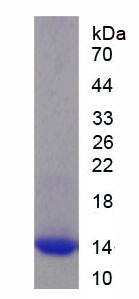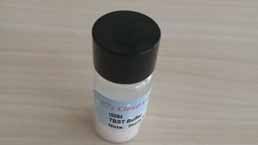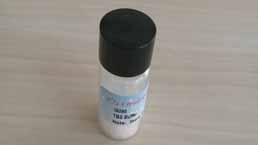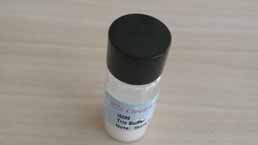Active Hemoglobin (HB) 

Hgb; Haemoglobin; Heterotetramer(αβ)2
Overview
Properties
- Product No.APB409Rb01
- Organism SpeciesOryctolagus cuniculus (Rabbit) Same name, Different species.
- ApplicationsCell culture; Activity Assays.
Research use only - DownloadInstruction Manual
- CategoryMetabolic pathwayInfection immunityHematologyNeuro science
- Buffer FormulationPBS, pH7.4, containing 5% Trehalose.
- Traits Freeze-dried powder, Purity > 90%
- Isoelectric Pointn/a
Sign into your account
Share a new citation as an author
Upload your experimental result
Review

Contact us
Please fill in the blank.
Activity test

Hemoglobin (HB) is a protein in red blood cells which contains iron. It is used to transport oxygen around the human body. Hemoglobin is found in the red blood cells of almost all vertebrates. Hemoglobin has peroxidase activity. In the presence of hydrogen peroxide, hemoglobin can catalyze the substrates 3,3 ', 5,5' - tetramethylbenzidine (TMB) to produce a blue compound which has a maximum absorption at 595 nm. Thus, the activity of native rabbit hemoglobin was measured by its ability to catalyze the substrates of TMB. The reaction was performed in PBS, pH 7.4 ( Assay Buffer), ainitiated by addition 40 μL of various concentrations of HB (diluted by Assay Buffer) to 160 µL of TMB. Incubated at 37 ℃ for 20min, then read at a wavelength of 595 nm immediately. The result was shown in figure 1, and the OD value was in a linear relationship with the concentration of HB.
Usage
Reconstitute in 10mM PBS (pH7.4) to a concentration of 0.1-1.0 mg/mL. Do not vortex.
Storage
Avoid repeated freeze/thaw cycles. Store at 2-8°C for one month. Aliquot and store at -80°C for 12 months.
Stability
The thermal stability is described by the loss rate. The loss rate was determined by accelerated thermal degradation test, that is, incubate the protein at 37°C for 48h, and no obvious degradation and precipitation were observed. The loss rate is less than 5% within the expiration date under appropriate storage condition.
Increment services
Citations
- Effects of ectoine on behavioural, physiological and biochemical parameters of Daphnia magnaPubmed:25460046
- Comparative Proteomics Identifies Host Immune System Proteins Affected by Infection with Mycobacterium bovisPubmed:27027307
- The intracellular bacterium Anaplasma phagocytophilum selectively manipulates the levels of vertebrate host proteins in the tick vector Ixodes scapularis.pubmed:27561965
- Elevated levels of protein AMBP in cerebrospinal fluid of women with preeclampsia compared to normotensive pregnant women.pubmed:27615121
- Chicory inulin ameliorates type 2 diabetes mellitus and suppresses JNK and MAPK pathways in vivo and in vitropubmed:28105758
- Oxidized Hemoglobin Is Antigenic and Immunogenic in Lupuspubmed:28694810
- 新規人工酸素運搬体HemoAct を用いた脳虚血再灌流障害治療開発に関する研究:
- Mural cell-derived laminin-α5 plays a detrimental role in ischemic strokePubmed: 30777135
- Decylubiquinone suppresses breast cancer growth and metastasis by inhibiting angiogenesis via the ROS/p53/BAI1 signaling pathwayPubmed: 32020421
- Water-extractable zinc protoporphyrin IX in Parma ham predominantly exists as complexes with hemoglobin and myoglobin
- Effects of Human Serum Albumin on the Fluorescence Intensity and Tumor Imaging Properties of IR‐780 Dye34687567


















